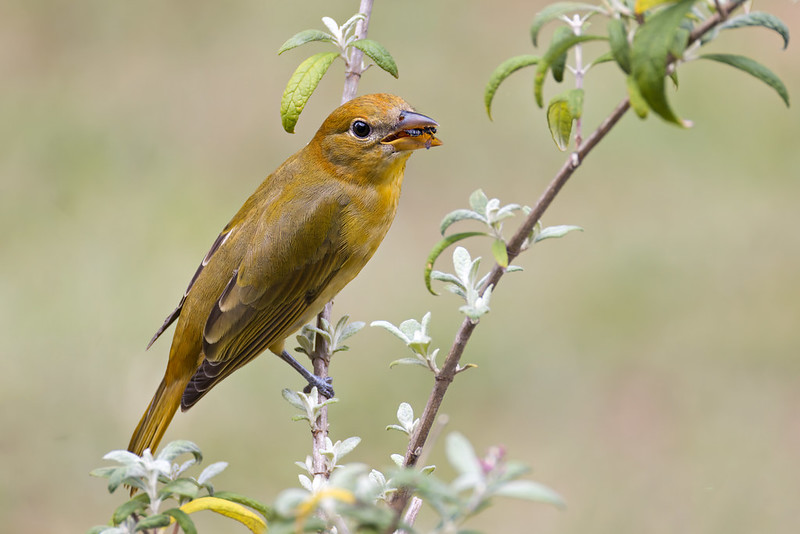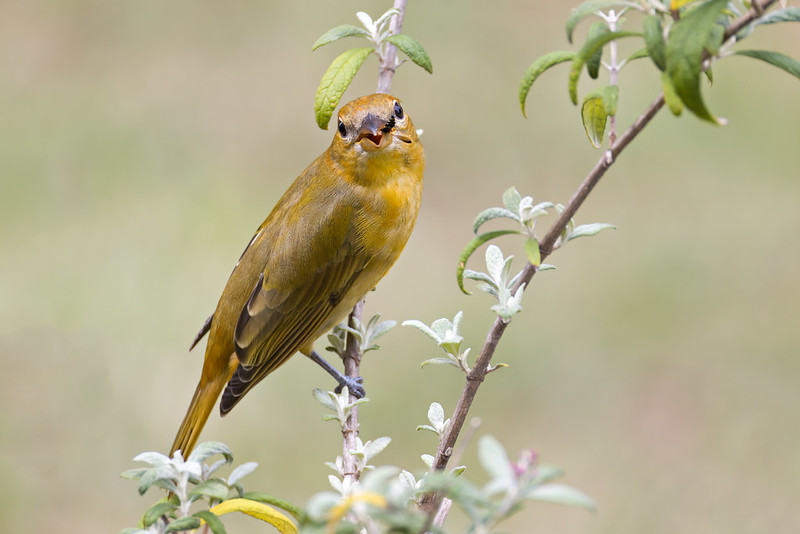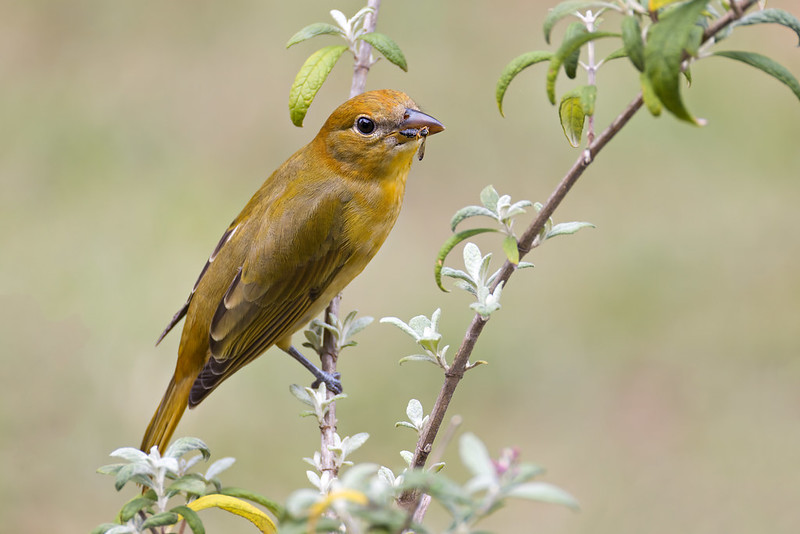I photographed this female Summer Tanager in my Arkansas yard moments after she’d snatched a wasp from a plant. She held it carefully in her bill, alert and focused, before swallowing her catch. The shrubs around my property attract plenty of flying insects, which bring in the tanagers that hunt them.

This tanager showed up at the end of September and stayed a couple of days. I had one visit at the end of summer last year too (An Immature Female Summer Tanager in My Arkansas Yard). My yard seems to have become a reliable stopover spot for tanagers heading south during fall migration.
Wildlife Notes: Female Summer Tanager Behavior and Wasp Hunting
Summer Tanagers are among the few bird species that regularly hunt and eat bees and wasps. They’ve developed a special technique to handle their stinging prey safely. According to field research, they usually take the insect to a perch, beat it against a branch to kill it, and then rub it to remove the stinger before eating.
I didn’t see this particular tanager do that. She grabbed the wasp, paused while I took these photos, and then swallowed it whole. Whether she’d already processed it or just had her own variation on the technique, I can’t say for sure. What stood out was her calm focus and steady grip, she clearly knew what she was doing.

Female Summer Tanagers are olive-yellow, unlike the bright red males, but their hunting skills match perfectly. They’re active foragers, moving through open woods and edges, catching insects in midair or pulling them from leaves and branches.
In Arkansas, Summer Tanagers arrive in spring, breed through the summer, and migrate south by early fall. Late September sightings like this one are usually migrating birds fueling up before heading to Central and South America. They favor open woodlands and forest edges, just like the mix of habitat I have in my yard.
Photography Notes: Shooting the Female Summer Tanager at 800mm
I photographed this sequence with my Canon EOS R5 Mark II and Canon RF 200–800mm f/6.3–9 IS USM lens at full extension (800mm). That pushed the aperture to f/9, which comes with a few challenges.
Camera Settings:
- Focal Length: 800mm
- Aperture: f/9
- Shutter Speed: 1/1250 second
- ISO: 3200–4000
- Exposure Compensation: +2/3
At f/9, light loss forced me to raise ISO to keep a fast shutter speed. Shooting at 1/1250 second froze the bird’s movements, but high ISO adds noise. The +2/3 exposure compensation helped prevent underexposure on her yellow plumage in uneven light.
The R5 Mark II handles high ISO well, but balancing exposure and noise always takes care. The 800mm reach was vital here, close enough for detail, far enough not to spook her. The lens’s image stabilization helped with handholding, though at this range, even tiny movements show up.
Depth of field at f/9 and 800mm is razor-thin. The tanager’s head and the wasp are crisp, but the background melts away, giving great subject isolation. Precise focus is key at this range, and the R5 Mark II’s autofocus nailed the bird’s eye every time.
Shooting at 800mm and f/9 means working with limits, higher ISO, narrow depth of field, and exposure balancing. But the reach, detail, and compression are worth it for shy or distant wildlife. The R5 Mark II’s performance makes it all possible.

